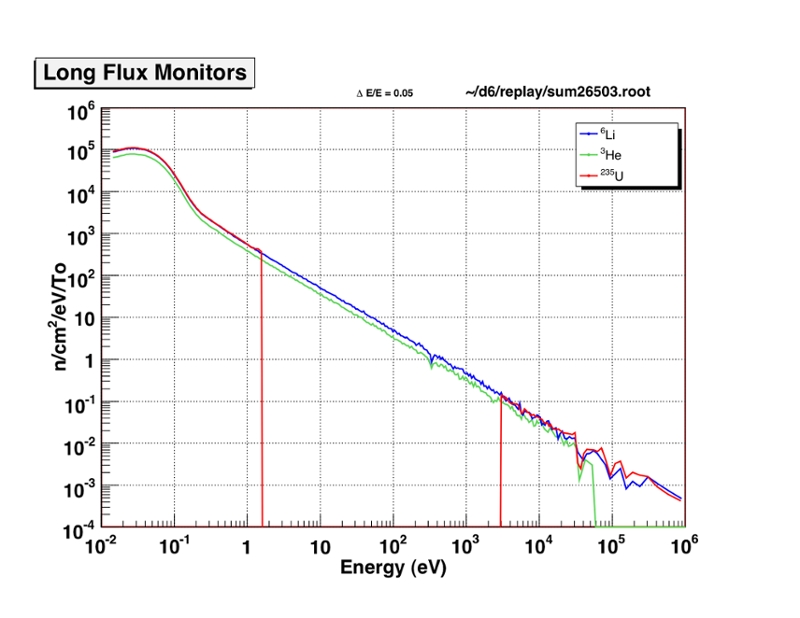About Flight Path 14
Instruments Specifications
Flight Path 14 views the upper-tier water moderator. It is configured with very tight collimation to produce a 0.7 cm diameter beam spot at the target location at 20.25 meters with minimal beam penumbra. The measured beam flux at the neutron monitor location (approximately 22.60 m) with 100 microamps of proton beam is shown below.

Flux measured with three different neutron detectors at 22.6 m. The proton beam current was 100 microamps.

Inside of the DANCE ball. The large gray sphere in the center is a 6LiH neutron absorber.
DANCE is designed as a high efficiency, highly segmented 4π BaF2 detector for calorimetrically detecting gamma-rays following a neutron capture. For practical reasons the detector modules do not really cover the entire solid angle. The design of the detector is such that a full 4π array would consist of 162 crystals of four different shapes, each shape covering the same solid angle. Two of the 162 crystals are left out in order to leave space for the neutron beam pipe. Depending on the experiment, one crystal can be replaced by a sample changer mechanism, which makes it possible to exchange up to 3 samples without closing the beam shutter and breaking the vacuum of the beam pipe. Thus the full array is designed to host 159 or 160 out of 162 possible BaF2 crystals. The dimensions of the bare crystals are designed to form a BaF2 shell with an inner radius of 17 cm and a thickness of 15 cm.

